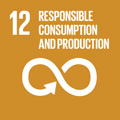- Docente: Roberto Bruno
- Credits: 3
- Language: Italian
- Teaching Mode: Traditional lectures
- Campus: Bologna
- Corso: Second cycle degree programme (LM) in Environmental Engineering (cod. 8894)
Learning outcomes
At the end of the laboratory the student knows:
- the characteristics of the main explosives used, with particular reference to mining engineering;
- the characteristics of the ignition methods of the main explosive;
- the principles and the design of the main specific muzzle schemes for the different applications;
- in video and with excursions in quarries the practical use of explosives for mining applications (excavation, detachment, rock removal ...).
Course contents
The laboratory aims to provide theoretical and practical information for the use of explosives in open pit and underground excavation procedures.
After a general introduction on explosives and their use for breaking rocks, the characteristics of the different types of explosives will be examined. Some geological, petrographic and rock mechanics skills will then be resumed to characterize the effect of the explosive in different conditions. Some more operational aspects such as loading and the different methods of priming, with the use of microtitards constitute an important section of the program.
The different types of blasting will be examined (on the surface, underground, for tunnels and shafts, ...), providing elements for the design of the blasting. A central point is constituted by controlled and underwater shooting, with reference also to the oil industry.
The laboratory concludes with a review of the regulatory aspects in Italy and with the analysis of safety problems.
Readings/Bibliography
- SME - MINING ENGINEERING HANDBOOK, 3rd Edition, 2011, Peter Darling ed., Published by Society for Mining, Metallurgy, and Exploration, Inc.
- MANUAL PRACTICO DE VOLADURA, Edición especial, 2013, published by EXSA SA
- MANUALE CORSO FORMAZIONE FOCHINI: GESTIONE DEGLI ESPLOSIVI IN SICUREZZA, Selva L. e Nardin Giacomo, 2013, published by SOGECA
Teaching methods
The laboratory consists of lectures with the aid of audio-visuals
Assessment methods
The exam is based on the discussion of a small blast project agreed between student and teacher
Teaching tools
Audio-visuals with examples of the use of explosives
Office hours
See the website of Roberto Bruno
SDGs

This teaching activity contributes to the achievement of the Sustainable Development Goals of the UN 2030 Agenda.
